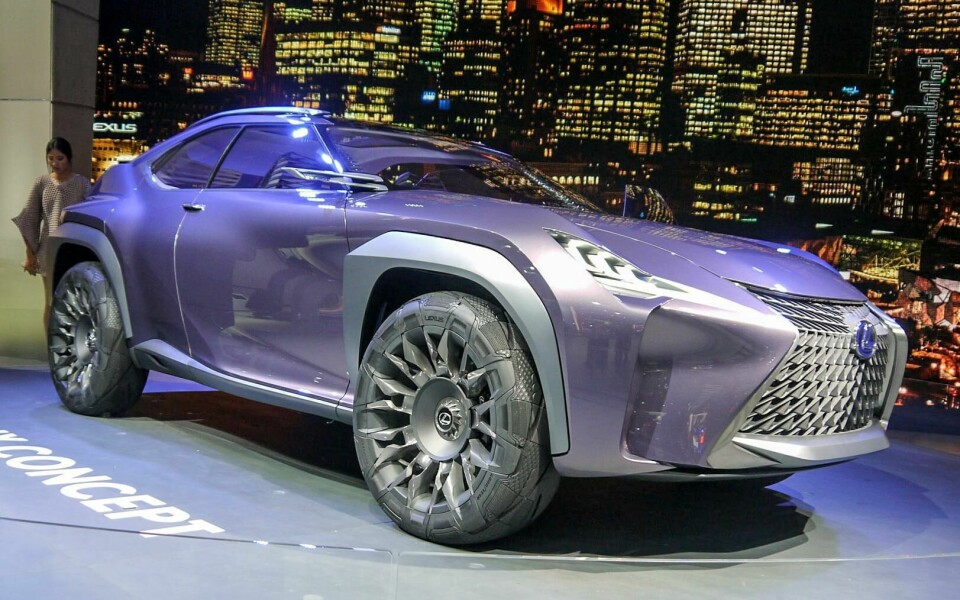
Paris 2016: Lexus UX offers ideas aplenty
Lexus UX Concept packed with ideas proves the brand is still filled with unrealised potential
The taut bulges and sharp machete chops of Lexus’s design language have risked descending into self-parody on recent cars like the NX, so it’s refreshing to see an injection of new ideas in the shape of the UX concept.
A softer and more human approach starts with the colour – a soothing lavender shade that chimes well with the some of the more organic shapes along the flanks and in the curve of the roof. A similar colourway extends to the interior, helping to connect the cabin with the bodywork.

Some elements of the exterior are familiar from production cars like the RC coupe, with cuts and folds separating the leading edge of the front fender from the nose, with its wide spindle grille. The echo of the spindle using creases at the rear is also a familiar motif.

Some elements are more harmonious then you might expect. Each headlamp is a unified piece, for example, reversing Lexus’s recent trend of separating the elements – most notably with a separate tick-shaped DRL.
Other elements are entirely novel, including the stubby fins at either end of the full-width rear lamp cluster. These fight for attention with the horizontal crease that wraps around the rear arch to fade away under the rear lamp.
Given the UX’s strong crossover vibe it’s no surprise to see contrasting wheelarch trims, finished in silver to match the roofbars, rocker panels and front lip. The shapes used are unexpected, however, providing an angular, mechanistic quality in contrast to their curvaceous surroundings. Indeed the rear lower valance looks as if it has taken its cue from the Terminator movies, with sharp mechanical hardware protruding through the more fleshy surroundings.

Equally noticeable are the complex bespoke tyres and sharply detailed wheels fitted to the concept, which dominate the side view with their tough, technical feel.

The initials UX are associated with user experience, and ED2, Lexus’s European design centre in the South of France, which created the concept, has clearly put plenty of thought into the human dimension.

The UX features a variation on the webbing-based Kinetic Seating Concept also unveiled in Paris, forming front seat squabs and backs using a network of interleaved straps. The rear seating is more conventional, aside from strapped headrests that emerge horizontally from the inner C-pillars.
A contrasting colour change between front and rear seating is accentuated by a diagonal change in surface that runs across both door cards.
The UX is not comfortable to look at from every angle, but we’d much rather be challenged by something that grabs our attention. It’s packed with ideas that may or may not appear on future Lexus models, but represents an interesting insight into how Lexus design might move on in interesting and unexpected ways.



